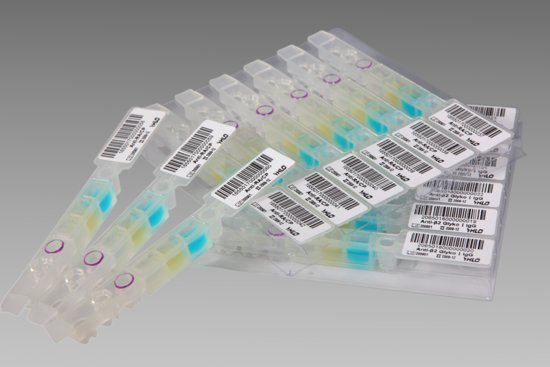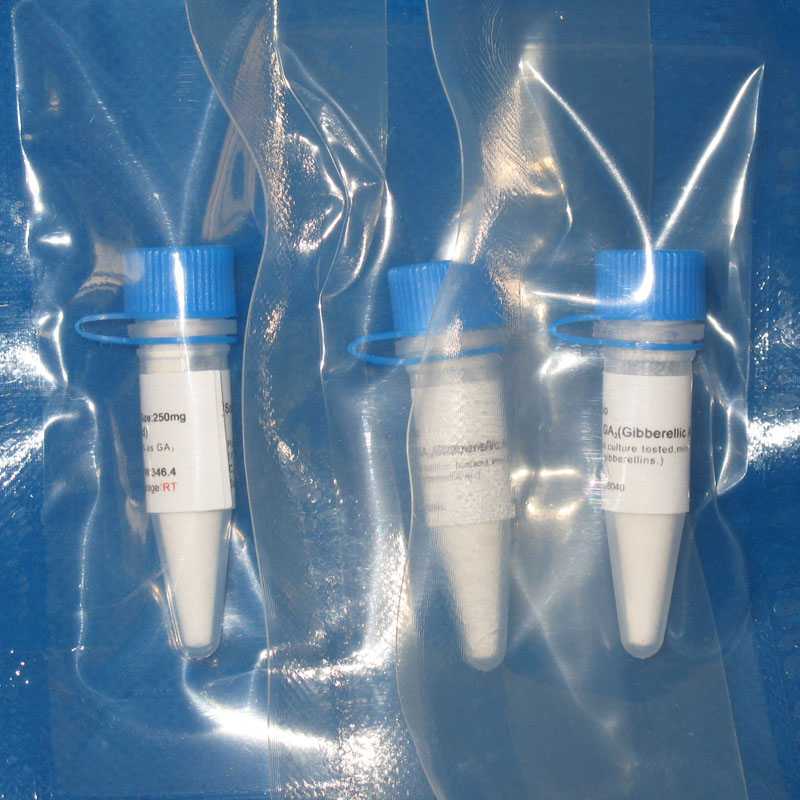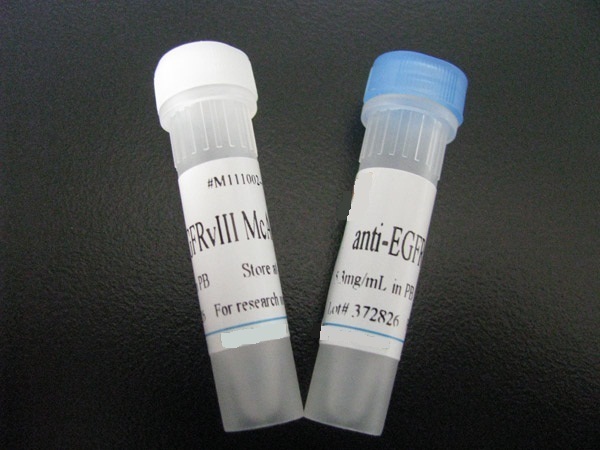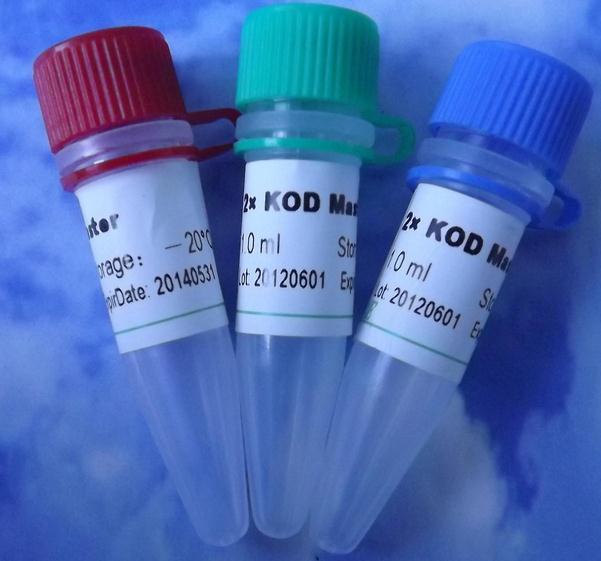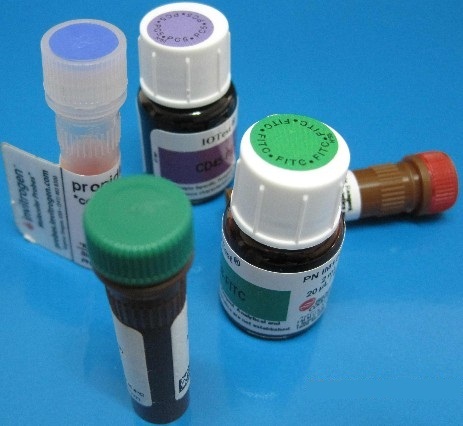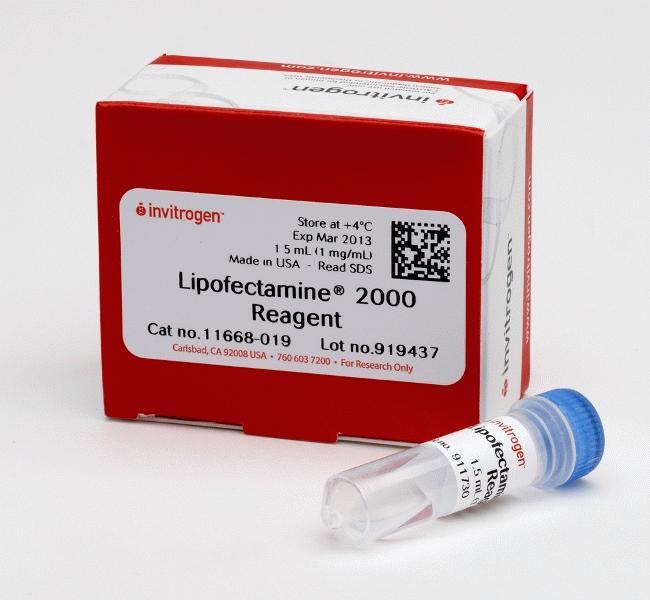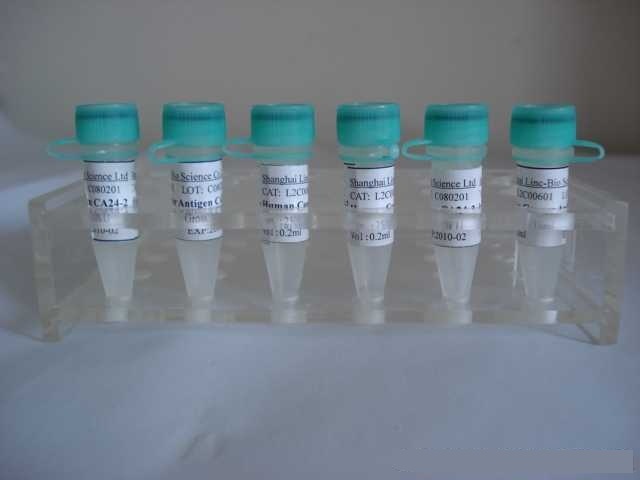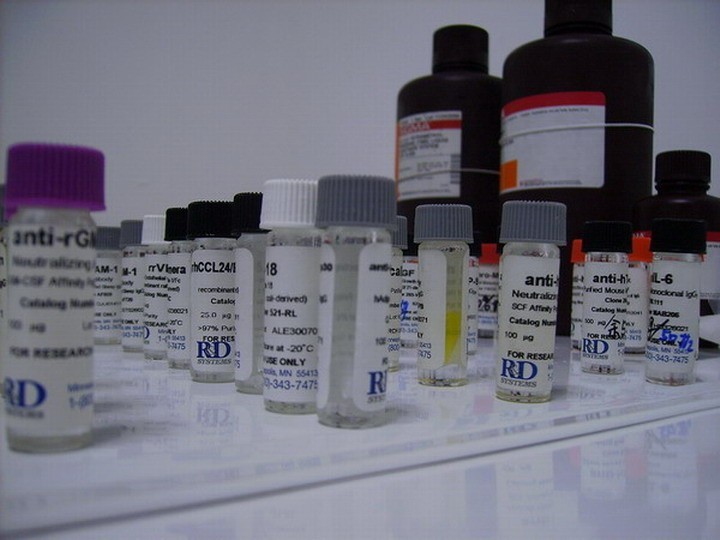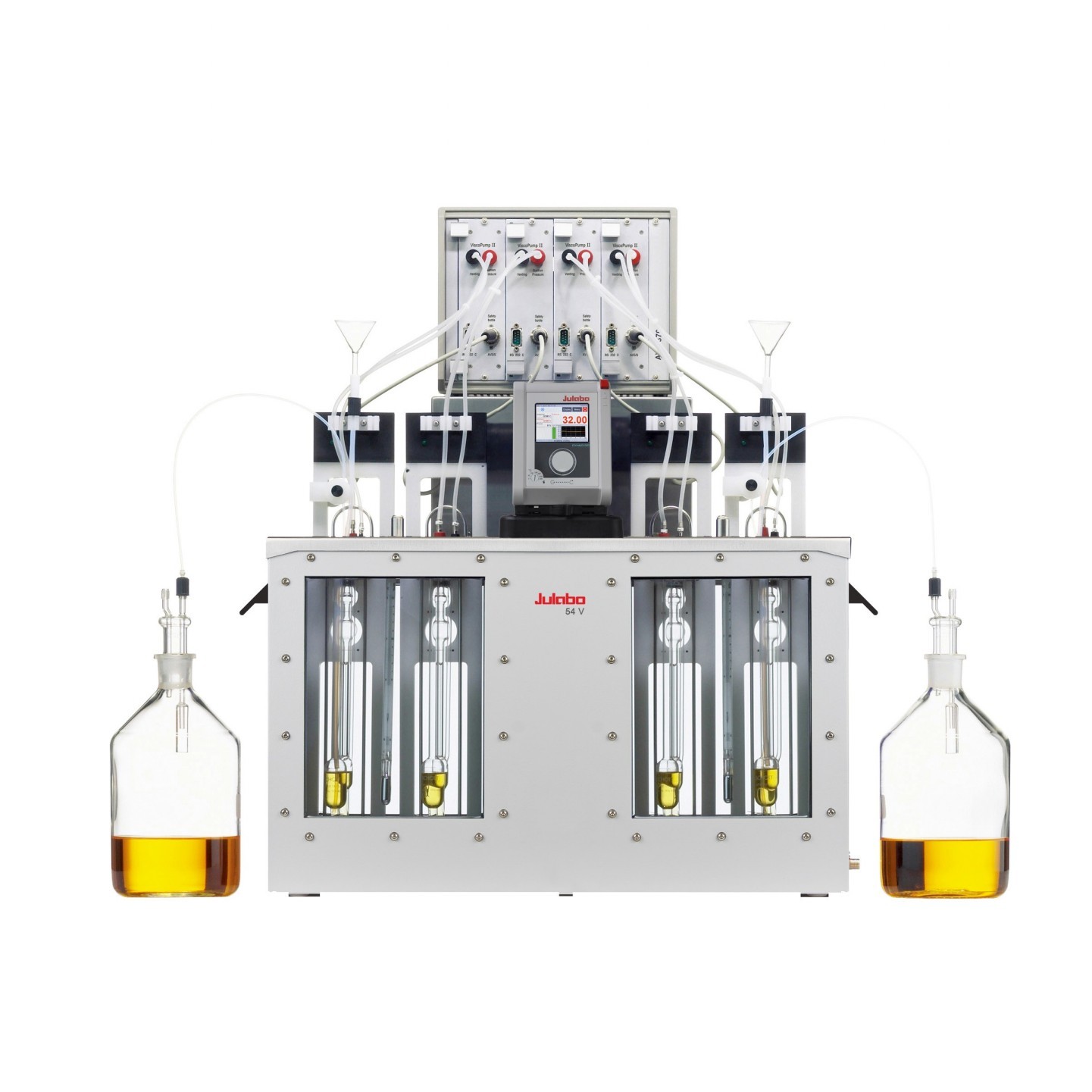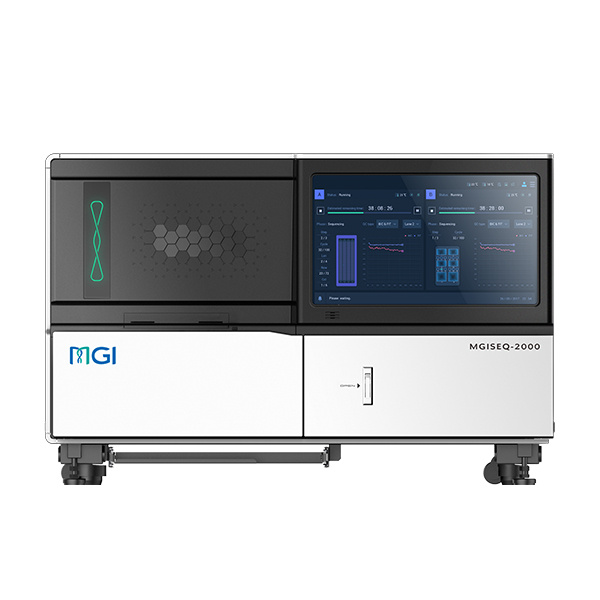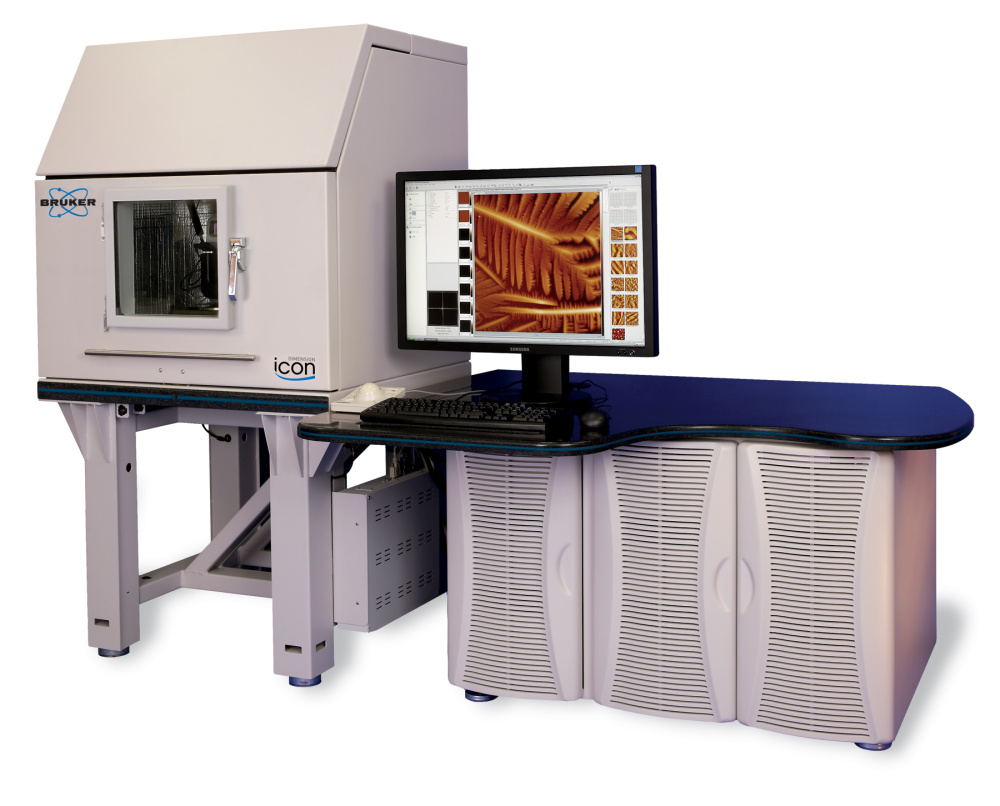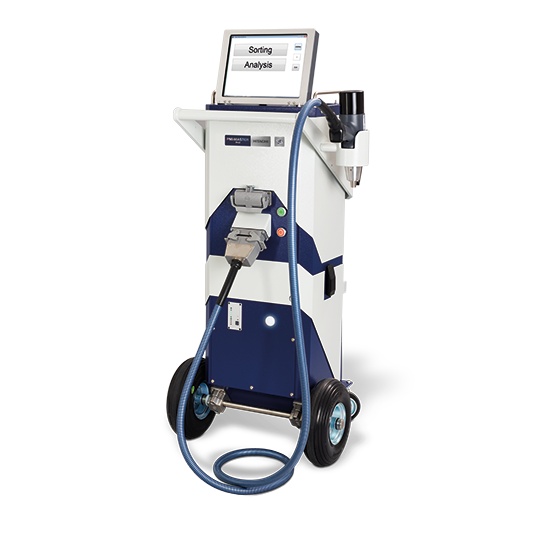英文名称 Anti-AEV polyprotein
中文名称 禽脑脊髓炎病毒AEV抗体
别 名 Genome polyprotein; RNA-directed RNA polymerase 3D-PO; P3D-POL; POLG_AEVCA.
浓 度 1mg/1ml
规 格 0.1ml/100μg 0.2ml/200μg
抗体来源 Rabbit
克隆类型 polyclonal
交叉反应 Avian Encephalomyelitis virus
产品类型 一抗
禽脑脊髓炎病毒AEV抗体研究领域 细胞生物 免疫学 细菌及病毒
性 状 Lyophilized or Liquid
免 疫 原 KLH conjugated synthetic peptide derived from Av AEV polyprotein
亚 型 IgG
纯化方法 affinity purified by Protein A
储 存 液 Preservative: 15mM Sodium Azide, Constituents: 1% BSA, 0.01M PBS, pH 7.4
产品应用 ELISA=1:500-1000 IP=1:20-100 IHC-P=1:100-500 IHC-F=1:100-500 IF=1:50-200
(石蜡切片需做抗原修复)
not yet tested in other applications.
optimal dilutions/concentrations should be determined by the end user.
保存条件 Store at -20 °C for one year. Avoid repeated freeze/thaw cycles. The lyophilized antibody is stable at room temperature for at least one month and for greater than a year when kept at -20°C. When reconstituted in sterile pH 7.4 0.01M PBS or diluent of antibody the antibody is stable for at least two weeks at 2-4 °C.
Important Note This product as supplied is intended for research use only, not for use in human, therapeutic or diagnostic applications.
禽脑脊髓炎病毒AEV抗体产品介绍
Function : Capsid proteins VP1, VP2, and VP3 form a closed capsid enclosing the viral positive strand RNA genome. All these proteins contain a beta-sheet structure called beta-barrel jelly roll. Together they form an icosahedral capsid (T=3) composed of 60 copies of each VP1, VP2, and VP3, with a diameter of approximately 300 Angstroms. VP1 is situated at the 12 fivefold axes, whereas VP2 and VP3 are located at the quasi-sixfold axes (By similarity).
VP0 precursor is a component of immature procapsids. The N-terminal domain of VP0, protein VP4, is needed for the assembly of 12 pentamers into the icosahedral structure. Unlike other picornaviruses, AEV VP4 may not be myristoylated (By similarity).
Protein 2B and 2BC precursor affect membrane integrity and cause an increase in membrane permeability (By similarity).
Protein 2C associates with and induces structural rearrangements of intracellular membranes. It displays RNA-binding, nucleotide binding and NTPase activities (By similarity).
Protein 3A, via its hydrophobic domain, serves as membrane anchor (By similarity).
Protein 3B is covalently linked to the 5'-end of both the positive-strand and negative-strand genomic RNAs. It acts as a genome-linked replication primer (By similarity).
Protein 3C is a cysteine protease that generates mature viral proteins from the precursor polyprotein. In addition to its proteolytic activity, it binds to viral RNA, and thus influences viral genome replication. RNA and substrate bind co-operatively to the protease (By similarity).
RNA-directed RNA polymerase 3D-POL replicates genomic and antigenomic RNA by recognizing replications specific signals (By similarity).
Subcellular Location : Protein VP2: Virion. Host cytoplasm (Potential).
Protein VP3: Virion. Host cytoplasm (Potential).
Protein VP1: Virion. Host cytoplasm (Potential).
Protein 2B: Host cytoplasmic vesicle membrane; Peripheral membrane protein; Cytoplasmic side (Potential). Note=Probably localizes to the surface of intracellular membrane vesicles that are induced after virus infection as the site for viral RNA replication. These vesicles are derived from the endoplasmic reticulum (By similarity).
Protein 2C: Host cytoplasmic vesicle membrane; Peripheral membrane protein; Cytoplasmic side (Potential). Note=Probably localizes to the surface of intracellular membrane vesicles that are induced after virus infection as the site for viral RNA replication. These vesicles are derived from the endoplasmic reticulum. May associate with membranes through a N-terminal amphipathic helix (By similarity).
Protein 3A: Host cytoplasmic vesicle membrane; Peripheral membrane protein; Cytoplasmic side (Potential). Note=Probably localizes to the surface of intracellular membrane vesicles that are induced after virus infection as the site for viral RNA replication. These vesicles are derived from the endoplasmic reticulum (By similarity).
Protein 3B: Virion (Potential).
Picornain 3C: Host cytoplasm (Potential).
RNA-directed RNA polymerase 3D-POL: Host cytoplasmic vesicle membrane; Peripheral membrane protein; Cytoplasmic side (Potential). Note=Interacts with membranes in a complex with viral protein 3AB. Probably localizes to the surface of intracellular membrane vesicles that are induced after virus infection as the site for viral RNA replication. These vesicles are derived from the endoplasmic reticulum (By similarity).
Post-translational modifications : Specific enzymatic cleavages by the viral protease in vivo yield a variety of precursors and mature proteins. During virion maturation, non-infectious particles are rendered infectious following cleavage of VP0. This maturation cleavage is followed by a conformational change of the particle (By similarity).
VPg is uridylylated by the polymerase and is covalently linked to the 5'-end of genomic RNA. This uridylylated form acts as a nucleotide-peptide primer for the polymerase (By similarity).
Similarity : Belongs to the picornaviridae polyprotein family. [
Contains 1 peptidase C3 domain.
Contains 1 RdRp catalytic domain.
Contains 1 SF3 helicase domain.
Database links : UniProtKB/Swiss-Prot: Q9YLS4.1
禽脑脊髓炎病毒AEV是由细小RNA病毒科(Picornaviridae)、肠病毒属(Enterovirus)的禽脑脊髓炎病毒(AEvirus,AEV)引起的,以主侵幼鸡中枢神经系统引起非化脓性脑炎为主要病理特征的一种病毒性传染病。本病呈世界性分布.对禽类可造成很大威胁。
抗体应在(-20℃)中冷冻干燥或浓缩的液体形式,直到需要,避免反复冷冻/解冻周期,降低抗体含量和浓度。相反,冻结在单次使用的等分试样重组抗体或添加防冻剂(甘油或乙二醇),从而使料液可以保持在-20℃下为液体形式,以使移液没有“解冻”。
![]()



